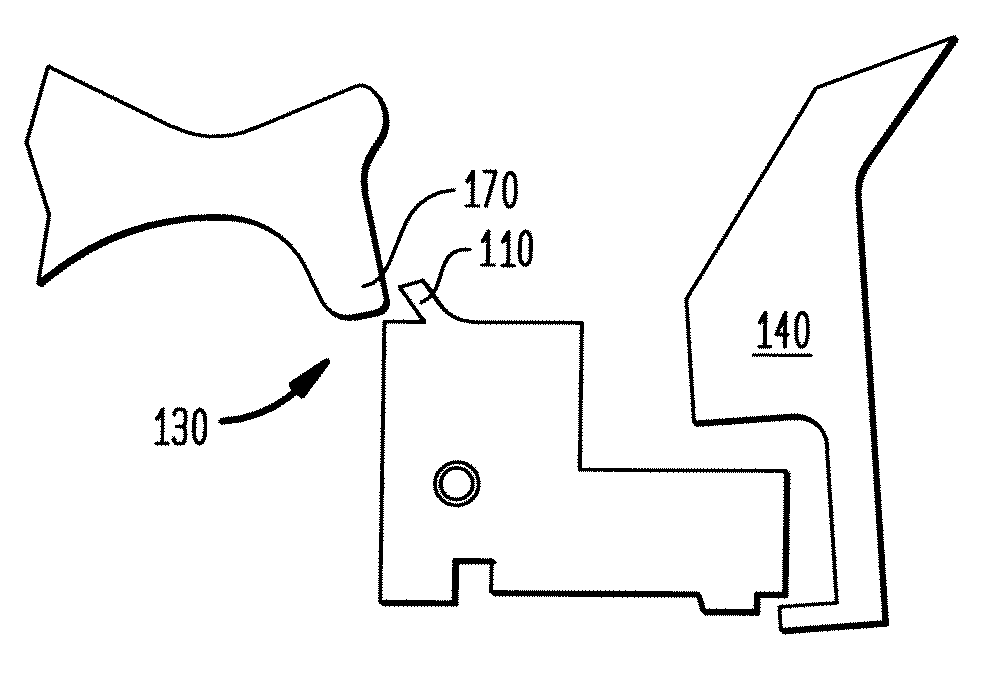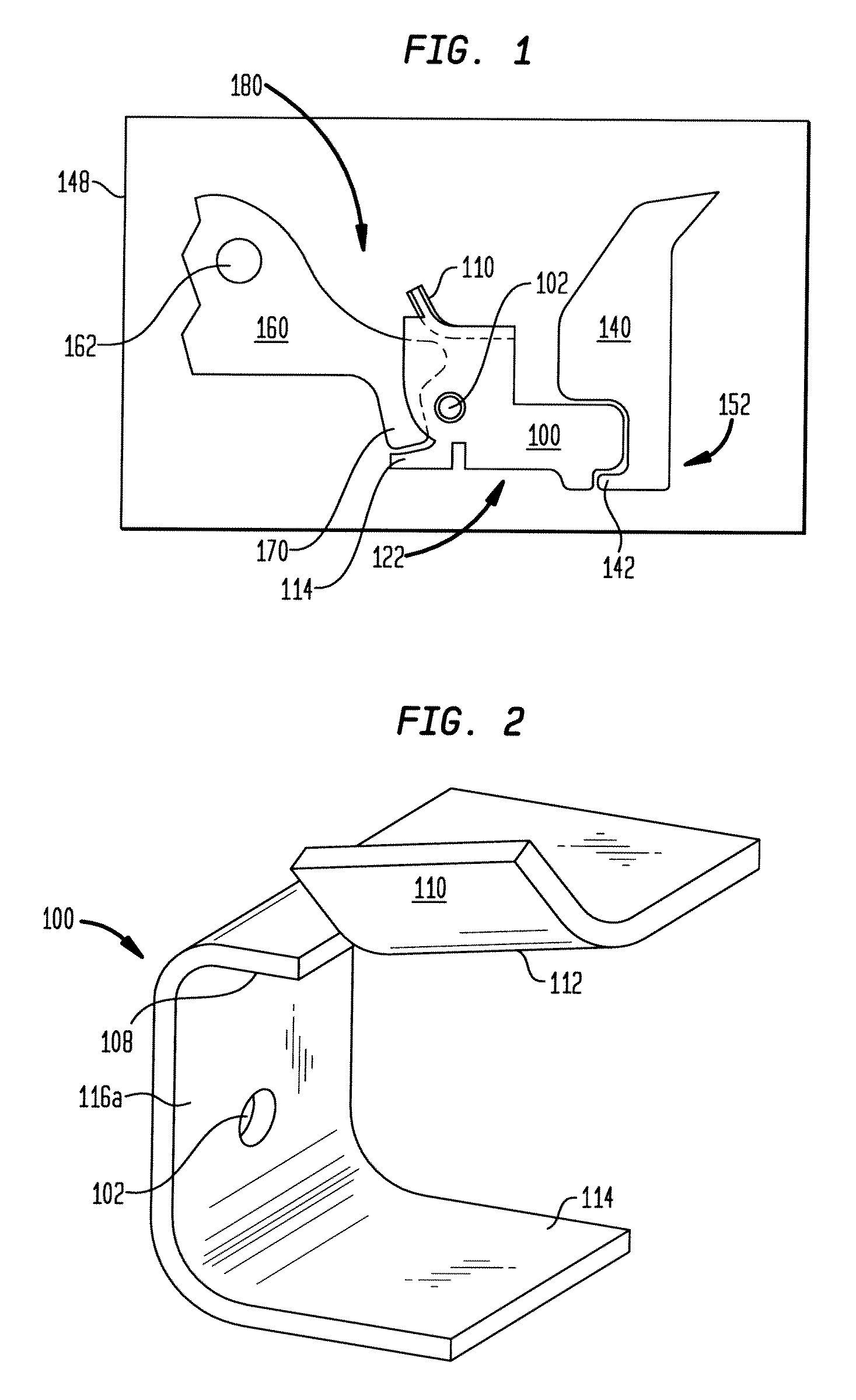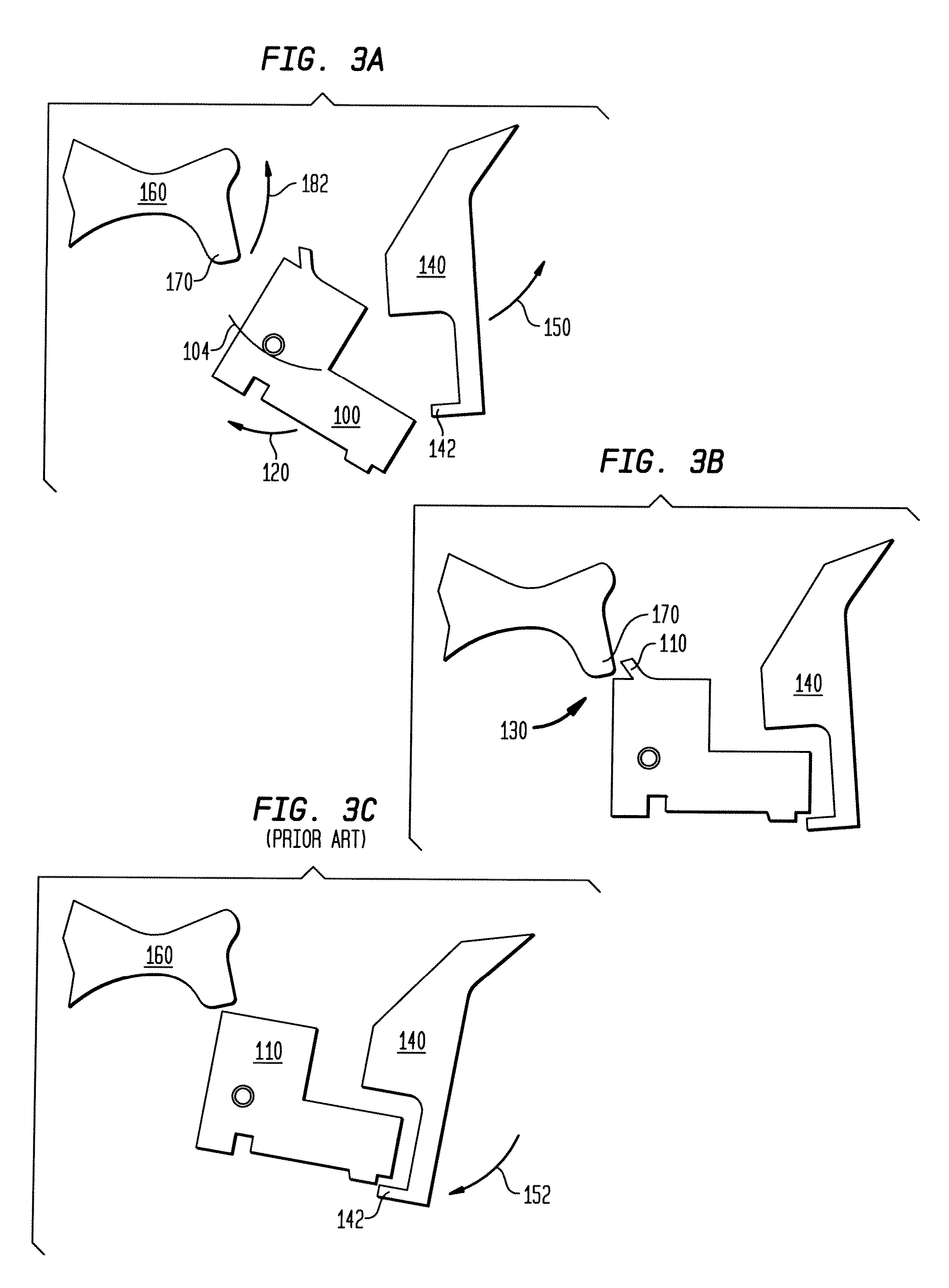Mechanical interlock for circuit breaker to prevent relatching of the breaker
a technology of mechanical interlocking and circuit breakers, which is applied in the direction of circuit breaker details, circuit breaker switches, circuit breaker excess current, etc., can solve the problems of not being able to reset the cradle in this case, adding extra cost to the mechanism, and not being able to guarantee the reset of the auxiliary latch. , to avoid accidental reset of the cradl
- Summary
- Abstract
- Description
- Claims
- Application Information
AI Technical Summary
Benefits of technology
Problems solved by technology
Method used
Image
Examples
Embodiment Construction
[0018]The present invention provides devices and methods relating to an interlock feature which prevents the auxiliary latch from improperly reengaging the trip bar latch. It is used in a breaker mechanism to restrict the auxiliary latch from reengaging after the breaker has been tripped, i.e. to prevent a nuisance relatch. If the auxiliary latch is reengaged before the cradle is in place, then the breaker cannot be reset. In FIG. 1, the circuit breaker 148 is set in the on position. When an overload condition occurs a series of actions lead to the tripped condition shown in FIG. 3A. More particularly, when trip bar 140 is tripped, the trip bar latch 142 releases auxiliary latch 100 which pivots to the open position wherein cradle 160 is free to move into the disengaged state. Movement of the auxiliary latch 100 back into the closed position should be initiated when the cradle 160 is reset to the engaged position 180. However, auxiliary latch rebound could follow a breaker trip, whe...
PUM
 Login to View More
Login to View More Abstract
Description
Claims
Application Information
 Login to View More
Login to View More - R&D
- Intellectual Property
- Life Sciences
- Materials
- Tech Scout
- Unparalleled Data Quality
- Higher Quality Content
- 60% Fewer Hallucinations
Browse by: Latest US Patents, China's latest patents, Technical Efficacy Thesaurus, Application Domain, Technology Topic, Popular Technical Reports.
© 2025 PatSnap. All rights reserved.Legal|Privacy policy|Modern Slavery Act Transparency Statement|Sitemap|About US| Contact US: help@patsnap.com



